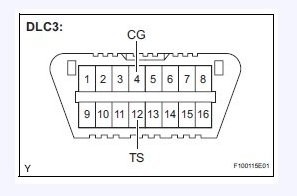Experiencing dashboard warning lights can be unsettling, especially when your scan tool throws you a curveball with an “Error Communicating with ABS and VSC” message on your Toyota 4Runner. If you’re a 4Runner owner familiar with the occasional “Christmas tree” effect of warning lights, you might have encountered this frustrating situation. Like many, I recently faced a similar issue with my “new-to-me” 07 Tundra SR5 (similar systems to the 4Runner) and decided to investigate. This guide, inspired by my experience, will walk you through a DIY method to potentially retrieve ABS and VSC codes when your scan tool is giving you communication errors, and help you understand what those codes might mean.
When Your Scan Tool Can’t Talk to ABS/VSC: What to Do?
Modern OBD2 scan tools are generally reliable for reading engine codes (CEL), but sometimes they stumble when trying to communicate with specific modules like the Anti-lock Braking System (ABS) and Vehicle Stability Control (VSC). An “Error Communicating” message doesn’t necessarily mean there’s a fault within the ABS or VSC system itself, but rather an issue in the communication pathway.
Before assuming a major malfunction, consider these possibilities:
- Scan Tool Compatibility: Is your scan tool fully compatible with your 4Runner’s ABS and VSC systems? Basic OBD2 scanners might only read generic engine codes.
- Connection Issues: A loose connection at the OBD2 port can disrupt communication.
- Wiring Problems: Faulty wiring in the vehicle’s communication network could be the culprit.
- Module Issues: In rarer cases, the ABS or VSC control module itself might have communication problems.
However, before diving into complex diagnostics, there’s a simple, old-school trick you can try – using a Special Service Tool (SST), or in DIY terms, a piece of wire or a paperclip. This method, which I successfully used on my Tundra (and is applicable to 4Runners of similar generations), allows you to bypass the scan tool and directly access the diagnostic codes.
DIY Method: Reading ABS and VSC Codes with a Wire
This method involves using a wire to jump specific pins in your 4Runner’s OBD2 port, effectively putting the system into diagnostic mode and flashing the error codes through the dashboard lights.
Disclaimer: Perform this procedure at your own risk. Incorrectly jumping pins could potentially cause damage. If you are uncomfortable with this procedure, consult a professional mechanic.
Steps:
-
Locate the OBD2 Port: It’s usually under the dashboard on the driver’s side.
-
Prepare Your “SST”: Take a small piece of wire or a paperclip and bend it into a U-shape.
-
Identify Pins 4 and 13: Refer to the OBD2 port diagram below to locate pins 4 (Ground) and 13 (TC – Test Connector). Important: Some guides incorrectly mention pin 12, ensure you use pin 13.
-
Jump Pins 4 and 13: With the ignition OFF, insert each end of your wire/paperclip into pin 4 and pin 13 of the OBD2 port.
-
Turn Ignition ON: Turn the ignition key to the “ON” position (do not start the engine).
-
Observe the Lights: The ABS, VSC, and other relevant dashboard lights will start flashing in a sequence. These flashes represent the diagnostic trouble codes (DTCs).
-
Interpret the Codes: Pay close attention to the flashing patterns. Codes are typically two-digit numbers, flashed with a sequence of blinks.
- Example: Four blinks, then a pause, then three blinks would indicate code 43.
In my case, using this method on my Tundra, I retrieved the following codes:
- VSC Code 43: This code generally indicates an ABS malfunction. Since VSC relies on the ABS to function, an ABS issue will often trigger a VSC code as well.
- ABS Code 37: “Different Diameter Tire Malfunction.” This pointed towards a potential issue with tire sizes being mismatched, which I needed to investigate further.
To help you interpret the codes you retrieve, here are lists of ABS and VSC codes for Toyota Sequoia (which are generally similar to 4Runner and Tundra for these systems):
ABS Codes (Refer to these charts for interpretation):
VSC Codes (Refer to these charts for interpretation):
Troubleshooting Based on Codes
Once you have the codes, you can start troubleshooting. In my situation, ABS code 37 immediately suggested checking my tires. Indeed, upon inspection, I found slightly different tire sizes on the front and rear axles, likely triggering the ABS and VSC lights.
If you encounter “Error Communicating” with your scan tool, and this DIY method successfully retrieves codes, it indicates that the ABS and VSC systems are likely functional, but there might be a communication issue specifically with your scan tool or a more basic electrical problem.
Conclusion
Don’t be immediately discouraged by a “Scan Tool Error.” This simple wire-jumping technique can be a valuable first step in diagnosing ABS and VSC issues on your Toyota 4Runner when standard scan tools fail to communicate. By retrieving the fault codes directly, you can gain valuable insights into potential problems and guide your troubleshooting process, potentially saving time and money. Remember to consult the code charts and, if needed, seek professional help for further diagnosis and repair.

